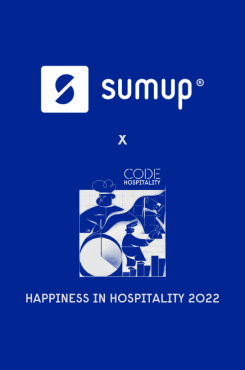Is a dark kitchen right for my business?
Published 11 March 2021
Sponsored content in collaboration with Square

We’re all aware of how ongoing lockdowns have upended the food-service industry over the past 12 months. There’s been a great response from restaurants, cafés, bars and pubs as they seek to stay afloat, creating at-home kits, initiatives and takeaway services. New models for operating restaurants are also gaining ground.
One such model is dark kitchens. Sometimes called ghost kitchens or virtual kitchens, dark kitchens have helped restaurants run at a very low cost and their impact is expected to stick around well past the pandemic.
Could operating a dark kitchen help your restaurant survive and thrive in the years to come? Here we help you to consider whether a dark kitchen is right for you.
First things first, what is a dark kitchen?
A dark kitchen is essentially a stand-alone or off-premises kitchen facility that prepares meals for takeaway or delivery orders. It may operate to serve a single restaurant’s needs, or exist as a shared production kitchen for multiple restaurants — in this model, dark kitchens may have an independent staff that is managed by the location instead of one specific restaurant.
Restaurants can utilize dark kitchens in a variety of ways, as the model is flexible and dependent on the needs and goals of each business. Expansion is one such goal: A restaurant might partner with a shared production kitchen outside its current delivery range.
Alternatively, some restaurateurs are responding to lockdowns by pivoting to dark-kitchen-only concepts. By choosing to launch their own dark kitchens and run delivery- restaurateurs can eliminate many overhead costs while still driving sales and growing their brands through virtual channels.
So, is a dark kitchen right for my business?
For restaurants looking to open up a second kitchen to support their growing business or increasing delivery volume, launching or partnering with a dark kitchen may be a good way to do so while keeping costs down. Especially at a time when operating a traditional brick-and-mortar restaurant involves not only the typical costs of full-time staffing, rent, and utilities but also the added challenges of enhanced cleaning requirements and reduced capacity rates (to accommodate social-distancing and local guidelines), opening a traditional second location may not be financially feasible right now.
However, there are many questions and considerations for restaurateurs to keep in mind if they’re considering incorporating dark kitchens into their operations.
– First, consider the restaurant’s objectives: Are you looking to close your brick-and-mortar space to do only delivery and takeout instead of onsite dining, add delivery that you don’t do now, or expand delivery and takeout to new geographies? How soon do you want the dark kitchen to be operational?
The answers will help restaurateurs determine their goals and ask the right questions of potential operator-partners. It will also help you start to think about the right location for the dark kitchen. Perhaps, for example, you want to start expanding your offering to customers around the country – if that’s the case, you might want to start looking at cities outside of the capital where your offering will be popular.
-Take into account your existing infrastructure: How effectively are your current point-of-sale and kitchen display systems serving the business — especially when it comes to takeout and delivery? A restaurant’s technology and payment solutions must be integrated with an effective online-ordering infrastructure to support a dark-kitchen concept.
-Factor in potential costs and ongoing volume: Will your ongoing order volume offset your contractual costs to a dark kitchen operator? What is your potential for profit? Dark kitchens can be a fit for equipping large chains with additional food-prep resources and delivery and takeout capabilities. Since shared-kitchen operators charge startup costs and monthly fees to restaurateurs, smaller restaurants should run cost calculations to determine if any dark-kitchen partnership makes economic sense in terms of expenses and delivery/order volume.
-Has it worked for other similar businesses? The hospitality industry is one of the most supportive out there. If it has worked for a similar business, get in touch and ask them about what’s gone well and what hasn’t. The more information, the better.
The future of dark kitchens
With an astronomical rise during the past year, the growth of dark kitchens is expected to continue in the years to come.
According to research firm Euromonitor, dark kitchens could be a $1 trillion global market by 2030. That’s because faster, cheaper delivery may capture large percentages of revenue that traditionally funnels into other areas of the food-service market, such as drive-through service, takeout, ready meals, and on-premises dining.
Restaurant owners should decide if their business’s unique challenges or growth plans can be effectively addressed by opening a delivery-only location or pivoting to a dark-kitchen concept. Lockdowns and social distancing measures may be making it all the more important for restaurants to adapt, but incorporating a dark kitchen may not be a fit for every business.




